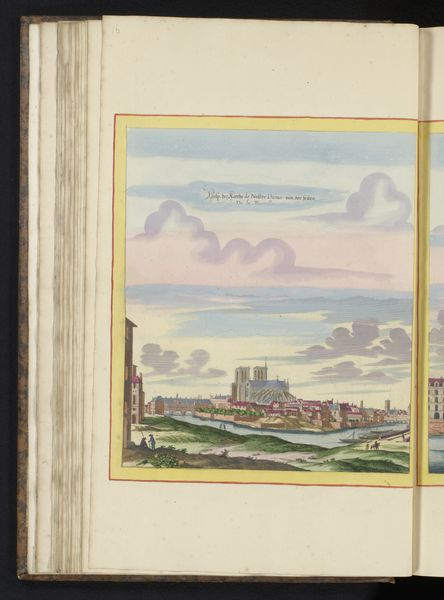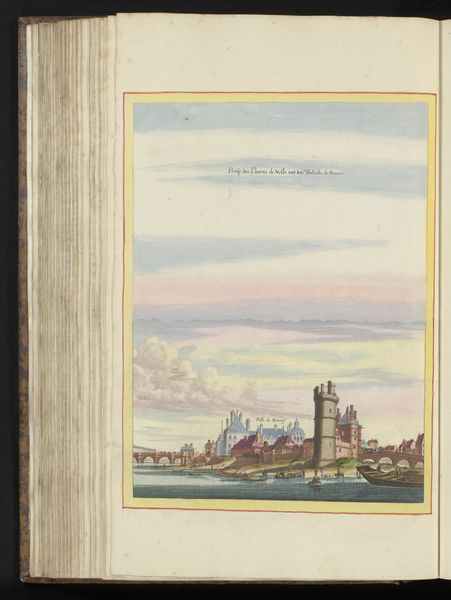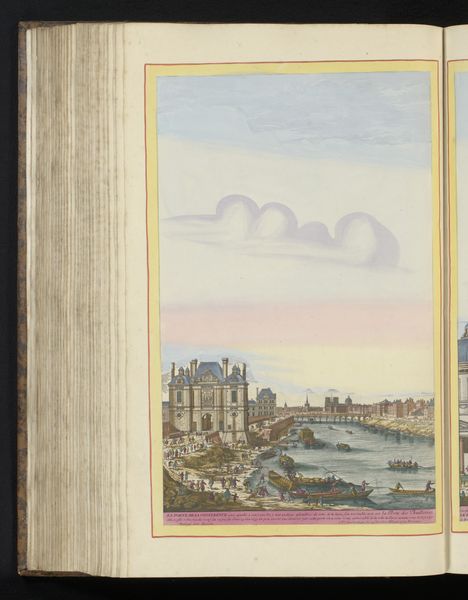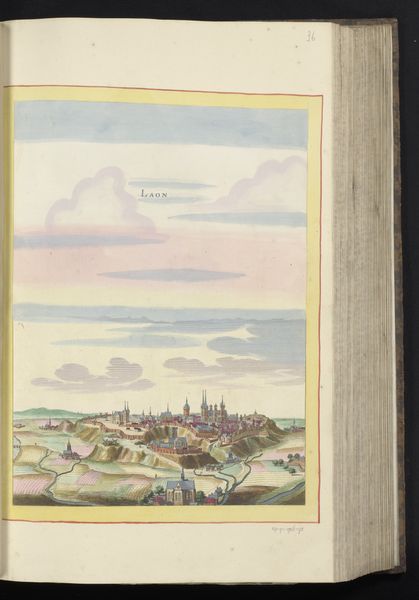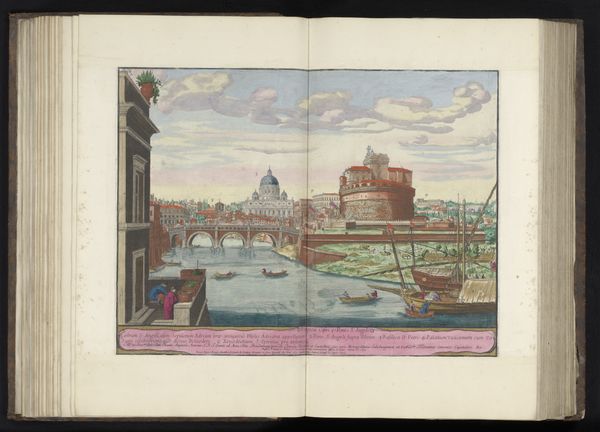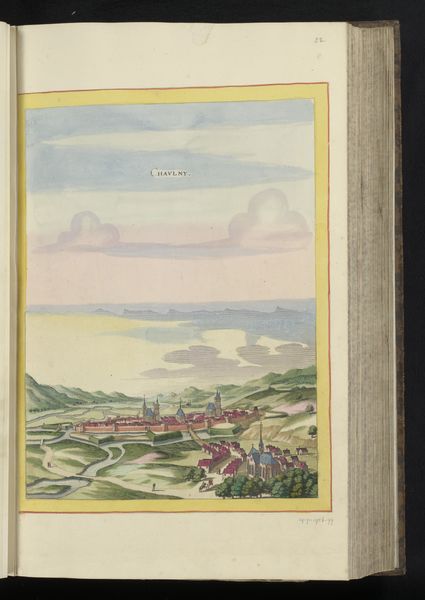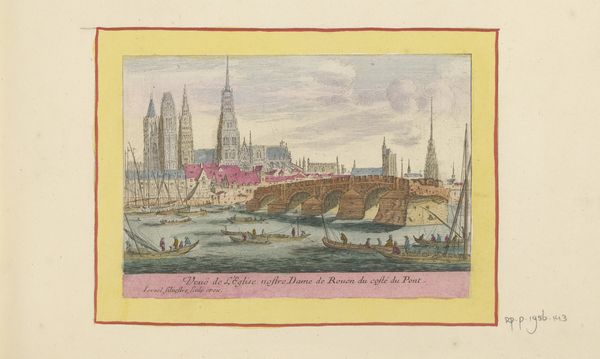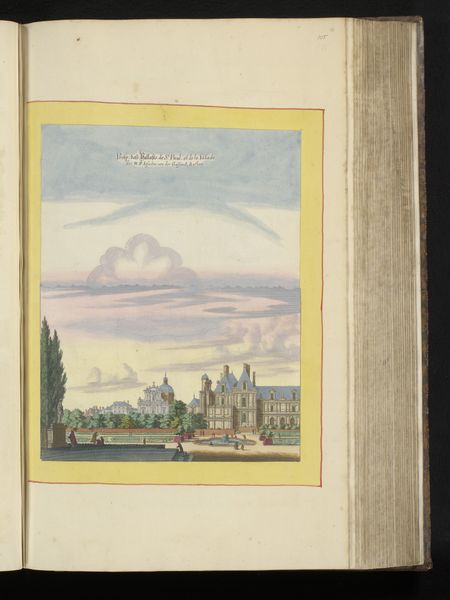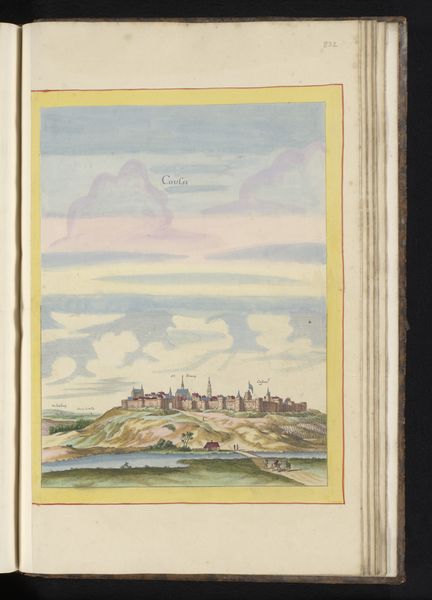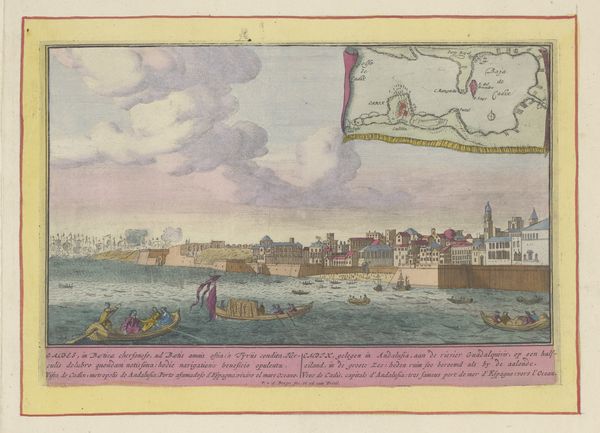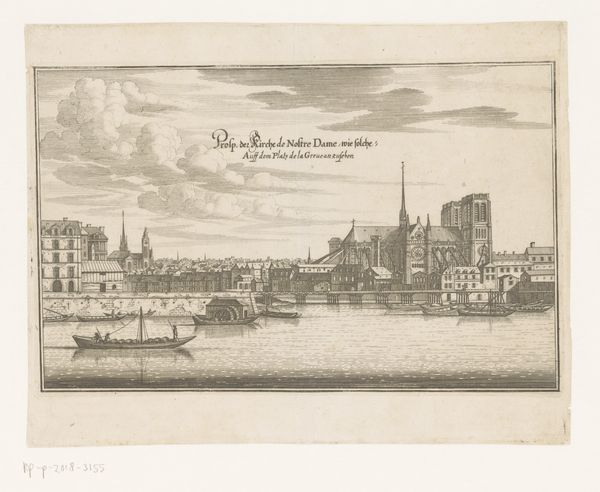
Gezicht op de zijkant van de Notre-Dame vanaf Place de Grève 1655
0:00
0:00
matthausiimerian
Rijksmuseum
painting, watercolor
#
dutch-golden-age
#
painting
#
landscape
#
perspective
#
watercolor
#
cityscape
#
watercolor
#
realism
Dimensions: height 332 mm, width 283 mm, height 534 mm, width 330 mm
Copyright: Rijks Museum: Open Domain
Editor: So, this is Matthäus Merian's "View of the Side of Notre-Dame from Place de Grève," done around 1655 in watercolor. It's really striking how… delicate it seems, yet it captures the imposing structure of the cathedral and the bustling city life on the Seine. What stands out to you when you look at it? Curator: I immediately see the watercolor. It's a deliberate choice that speaks volumes. Watercolor was often considered a preliminary medium, used for sketches or studies, not necessarily finished "art." This elevation of watercolor to depict such an important landmark raises interesting questions about artistic value and the perception of labor. The choice isn't arbitrary; it positions the creation in a specific artisanal sphere, linked to craft and direct observation rather than grand academic painting. Editor: That’s fascinating. It does seem like using watercolor democratizes the scene a bit. Like anyone with some skill could attempt this view. Curator: Exactly. The labor involved in preparing pigments, sourcing paper, even the act of being on-site to create this cityscape is important to consider. The *making* is intrinsic to the meaning. It’s not just about the Notre Dame. How does the Seine function here, thinking about waterways, material transportation, and commerce in 17th-century Paris? Editor: Wow, I hadn't considered the river's role beyond aesthetics! It was a highway for materials and goods. So Merian isn't just painting a pretty picture, but a depiction of a city at work. Curator: Precisely. And the level of detail speaks to that intense labor; how carefully they delineated the brickwork to ensure this image had great fidelity and a life-like, “real” character. Consider this piece in contrast to an oil painting of the same subject—it changes the statement entirely. Editor: This totally changes my perspective. It's not just about *what* is depicted, but *how* and with what materials, impacting the value we place on the art and the scene itself. Curator: Absolutely, and by extension, the society it represents. A whole socio-economic structure becomes tangible through this simple, and seemingly delicate, watercolor.
Comments
No comments
Be the first to comment and join the conversation on the ultimate creative platform.
